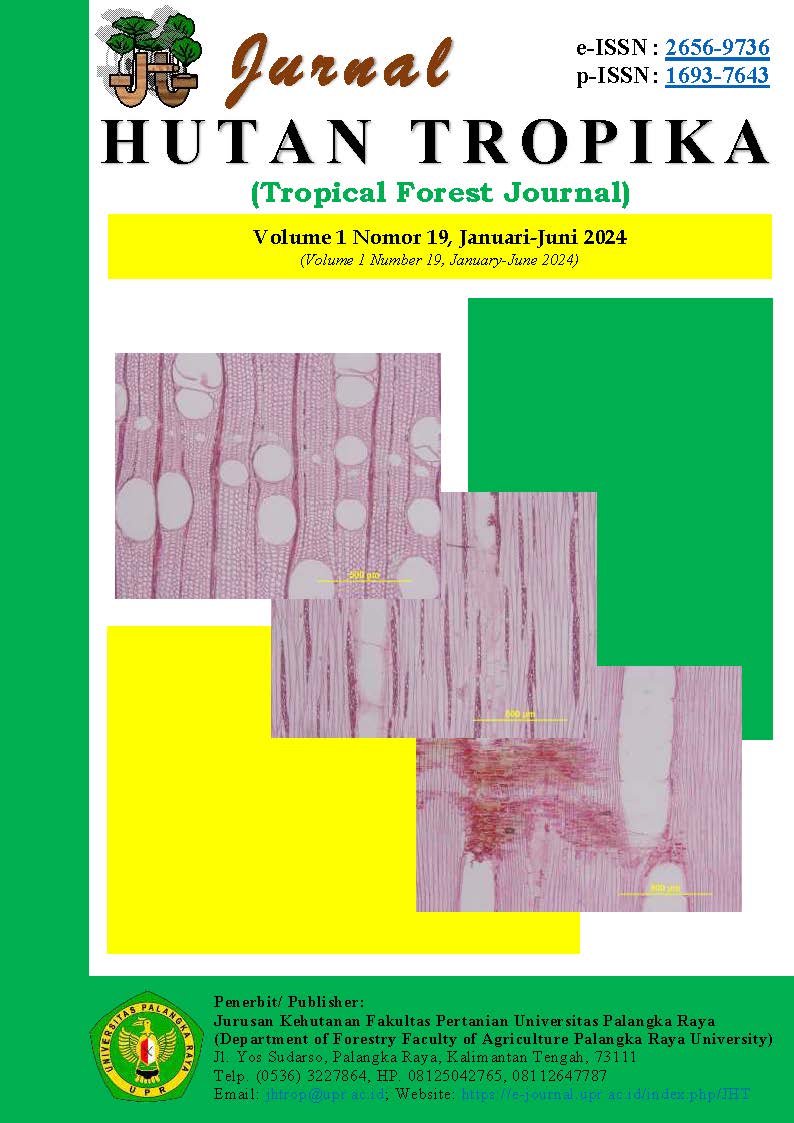Evaluation of Lung Function as a Result of Bad Air Quality from Forest and Peatland Fires Concerning Work Activities
Penilaian Fungsi Paru sebagai Akibat Kualitas Udara Buruk dari Kebakaran Hutan dan Gambut yang Mempengaruhi Aktivitas Kerja
DOI:
https://doi.org/10.36873/jht.v19i1.14219Kata Kunci:
Lung Function, Forest Fires, PM2.5, SpirometerAbstrak
Air quality continues to be a significant concern for the environment and human health on a global scale, especially in emerging nations. In 2015, Indonesia attracted worldwide attention as a result of extensive forest and peatland fires. The particle concentration indicator in Central Kalimantan exhibited an elevated level in 2023 as compared to 2022. Exposure to air contaminated with PM pollution presents substantial health hazards for persons participating in routine activities. Nevertheless, there is a scarcity of studies about the effects of forest fires on respiratory health in Central Kalimantan. The calibrated Chest Miyagi multipurpose HI-801 spirometer was used to do lung function measurements. Participants were assessed while standing indoors in a controlled environment with consistent air flow. A researcher recruited a total of 215 respondents who met the research criteria from 7 urban and rural locations. The locations were subjectively chosen by the researcher to achieve the desired sample size, with a focus on places near forest and peatland fire sources. Prior to the test, the subjects' height and weight were assessed and entered into the spirometer, which then automatically calculated predictions for lung function. Spirometry is a method used to evaluate lung function, which involves measuring several parameters including forced vital capacity (FVC), forced expiratory volume in one second (FEV1), the ratio of FEV1 to FVC, and Forced Expiratory Flow (FEF). This study aimed to assess the effects of recurrent forest fires, which result in poor air quality, on lung function in individuals based on their occupation in Palangka Raya City, Pulang Pisau Regency, and Kapuas Regency, located in Central Kalimantan Province. This assessment was conducted using spirometry tests. In 2023, it was noted that the quantity of PM 2.5 in the air in Palangka Raya City surpassed the level set by the World Health Organisation (WHO). However, there were no notable variations in lung function among the participants based on their gender.
Unduhan
Unduhan
Diterbitkan
Terbitan
Bagian
Lisensi
Hak Cipta (c) 2024 Tumpal Simatupang, Yetrie Ludang, Aswin Usup, Nawan, Bambang S. Lautt, Liswara Neneng

Artikel ini berlisensi Creative Commons Attribution 4.0 International License.
















